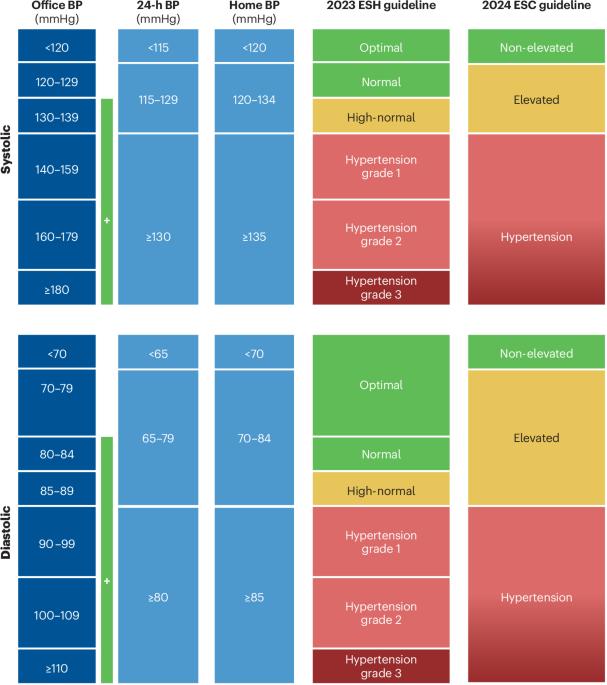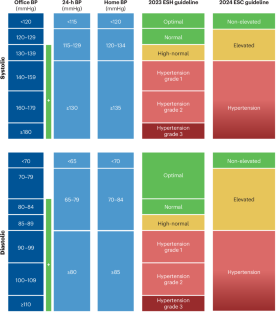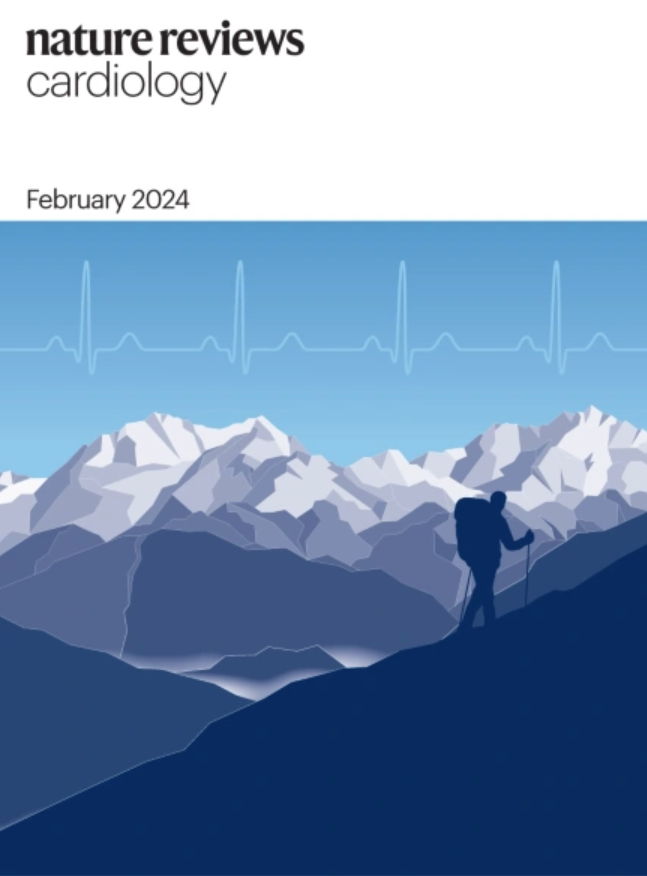European guidelines for hypertension in 2024: a comparison of key recommendations for clinical practice
IF 44.2
1区 医学
Q1 CARDIAC & CARDIOVASCULAR SYSTEMS
引用次数: 0
Abstract
Hypertension is the most prevalent modifiable risk factor for cardiovascular disease and for cardiovascular and all-cause mortality globally. Suboptimal control of elevated blood pressure places a substantial burden on health-care systems worldwide. Several factors contribute to this suboptimal control, such as limited awareness of hypertension, lack of appropriate diagnosis and poor control of blood pressure among those with a diagnosis. These factors can be due to patient non-adherence to treatment, inertia among health-care professionals and low uptake and implementation of clinical guideline recommendations. From 2003 to 2018, the European Society of Hypertension and the European Society of Cardiology jointly published four sets of guidelines on hypertension. However, the two societies released separate guidelines on hypertension in 2023 and 2024, respectively. These two sets of European guidelines agree on most recommendations, but some differences have been identified. In this Expert Recommendation, we highlight the key consensus recommendations from the two guidelines; compare differing approaches to the definition, classification, diagnosis and treatment of hypertension; and aim to help health-care professionals in their decision-making to improve the management of hypertension and to reduce the burden of hypertension-associated outcomes and premature deaths. In this Expert Recommendation, Lauder and colleagues compare the latest European Society of Cardiology and European Society of Hypertension guidelines on hypertension, highlight the key consensus recommendations and compare differing approaches to definitions, classification, diagnosis and treatment, with the aim to help health-care professionals in their decision-making to improve the management of hypertension.


2024年欧洲高血压指南:临床实践关键建议的比较
高血压是全球心血管疾病以及心血管和全因死亡率最普遍的可改变危险因素。高血压控制不理想给世界各地的卫生保健系统带来了沉重负担。有几个因素导致了这种次优控制,例如对高血压的认识有限,缺乏适当的诊断以及诊断者血压控制不良。这些因素可能是由于患者不坚持治疗、卫生保健专业人员的惰性以及临床指南建议的接受和执行程度低。2003年至2018年,欧洲高血压学会和欧洲心脏病学会联合发布了四套高血压指南。然而,这两个协会分别在2023年和2024年发布了单独的高血压指南。这两套欧洲指南在大多数建议上是一致的,但也发现了一些差异。在本专家建议中,我们强调了两份指南中的关键共识建议;比较不同方法对高血压的定义、分类、诊断和治疗;旨在帮助卫生保健专业人员做出决策,以改善高血压的管理,减轻高血压相关后果和过早死亡的负担。
本文章由计算机程序翻译,如有差异,请以英文原文为准。
求助全文
约1分钟内获得全文
求助全文
来源期刊

Nature Reviews Cardiology
医学-心血管系统
CiteScore
53.10
自引率
0.60%
发文量
143
审稿时长
6-12 weeks
期刊介绍:
Nature Reviews Cardiology aims to be the go-to source for reviews and commentaries in the scientific and clinical communities it serves. Focused on providing authoritative and accessible articles enriched with clear figures and tables, the journal strives to offer unparalleled service to authors, referees, and readers, maximizing the usefulness and impact of each publication. It covers a broad range of content types, including Research Highlights, Comments, News & Views, Reviews, Consensus Statements, and Perspectives, catering to practising cardiologists and cardiovascular research scientists. Authored by renowned clinicians, academics, and researchers, the content targets readers in the biological and medical sciences, ensuring accessibility across various disciplines. In-depth Reviews offer up-to-date information, while Consensus Statements provide evidence-based recommendations. Perspectives and News & Views present topical discussions and opinions, and the Research Highlights section filters primary research from cardiovascular and general medical journals. As part of the Nature Reviews portfolio, Nature Reviews Cardiology maintains high standards and a wide reach.
 求助内容:
求助内容: 应助结果提醒方式:
应助结果提醒方式:


